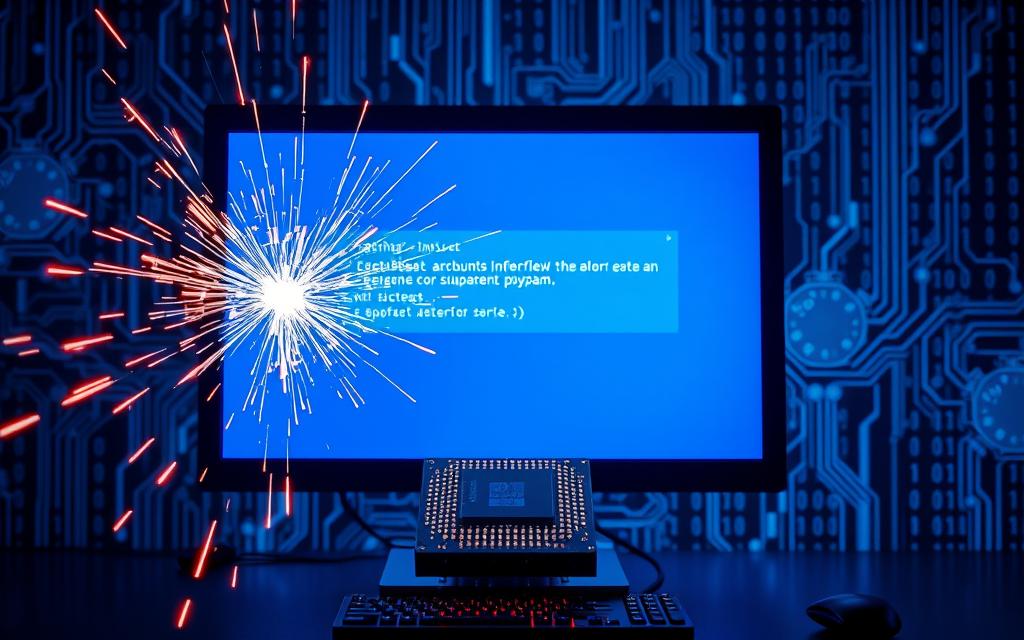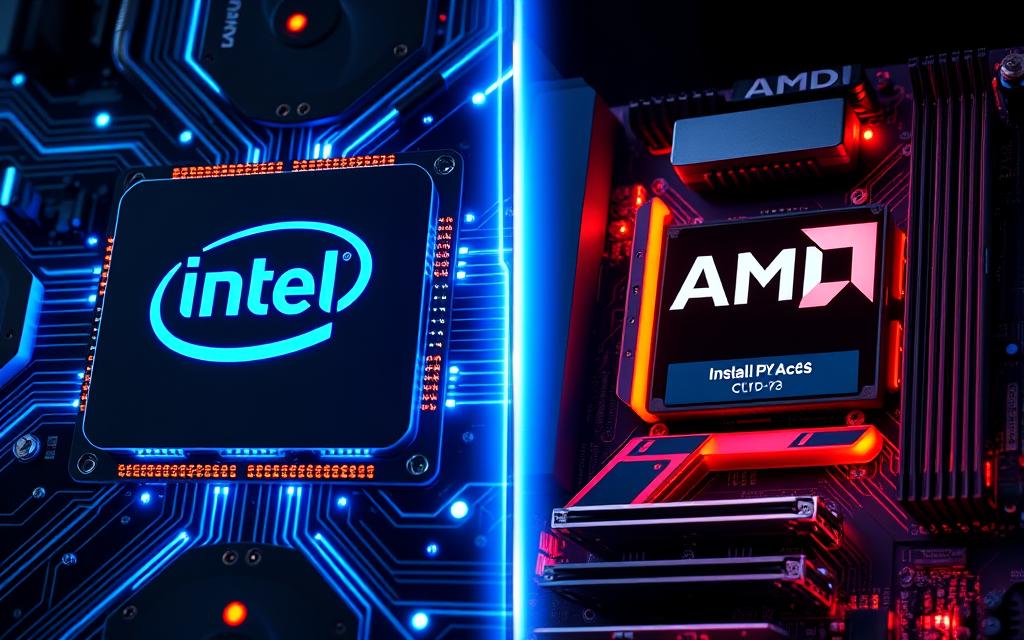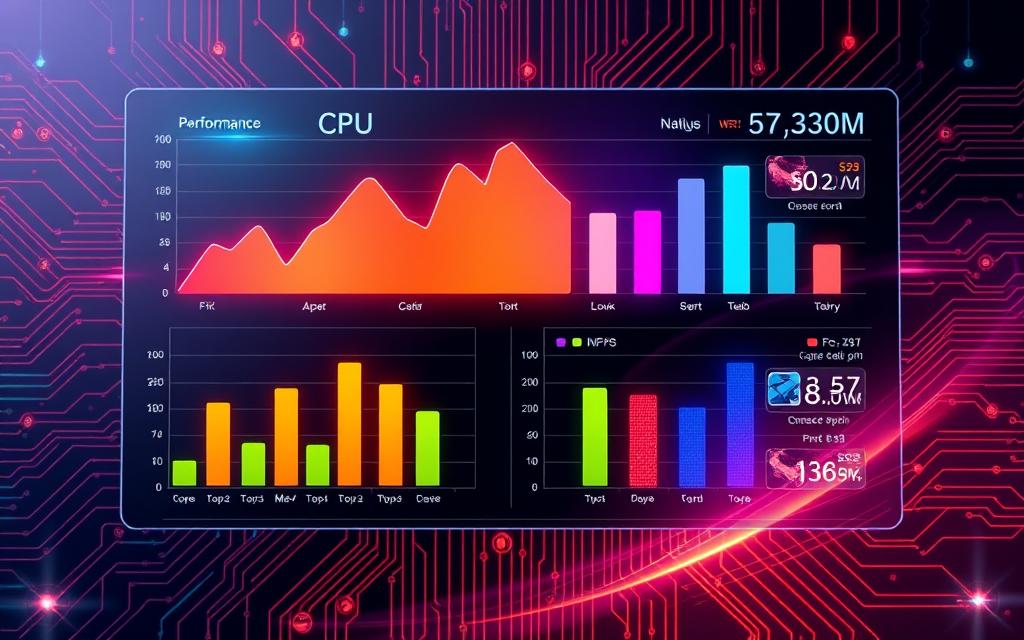Encountering blue screen CPU errors can be frustrating, signaling critical problems with your Windows operating system. This guide will help you navigate the complexities of error troubleshooting, focusing on identifying the root causes of the notorious blue screen of death (BSOD). Factors like software conflicts, especially driver issues, and hardware malfunctions such as overheating, can lead to these disruptive errors. By following this step-by-step approach, you’ll be equipped to implement effective blue screen fixes and carry out thorough CPU diagnostics. With the right techniques, you can restore your system’s stability and minimize future occurrences of blue screen CPU errors.
Understanding Blue Screen CPU Errors
The blue screen CPU errors, commonly known as the Blue Screen of Death (BSOD), present a significant issue for many users. This critical error screen occurs when the Windows operating system encounters a fatal system error, typically linked to both hardware and software issues. When a BSOD appears, it often includes a specific error code that can assist in identifying the underlying problem.
What is the Blue Screen of Death (BSOD)?
The BSOD serves as a protective mechanism for Windows, indicating that something has gone severely wrong. When a blue screen CPU error occurs, the system halts to prevent further damage. Error codes associated with BSOD can vary. One notable error code related to CPU problems is 0x0000001A, identified as MEMORY_MANAGEMENT. Approximately 60-70% of reported BSOD error codes involve uncommon issues. Such incidents can arise unexpectedly during tasks, including gaming, usually observed after a few months of operation.
Common Causes of Blue Screen CPU Errors
Several common causes can trigger blue screen CPU errors. A malfunctioning CPU can lead to instability, resulting in these critical errors. Here are some typical culprits:
- Improperly installed hardware
- Corrupt system files
- Critical process failures
- Driver errors accounting for about 10-15% of BSOD occurrences
- Device issues constituting around 20-30% of recorded errors
- Overheating, often exacerbating CPU failures
Diagnostics tools such as Prime95 and Intel Processor Diagnostic Tool can be employed to check for potential CPU malfunctions. Identifying these common causes ensures timely interventions, reducing the risk of repeated blue screen CPU errors.
| Error Code | Description | Occurrence Rate |
|---|---|---|
| 0x0000001A | MEMORY_MANAGEMENT | High |
| Unspecified Codes | Related to various issues | 60-70% |
| File System Errors | Related to storage issues | 20-30% |
| Driver Errors | Issues with hardware drivers | 10-15% |
| Memory Issues | Involves RAM problems | 5-10% |
| System Initialization Failures | Boot-related issues | Less than 5% |
Understanding these factors helps in troubleshooting effectively. Regular maintenance, along with timely updates, aids in minimizing the potential for blue screen CPU errors.
Identifying the Error Code
Identifying the error code during a blue screen error can be pivotal for effective troubleshooting. Windows stop codes serve as valuable indicators to pinpoint the issues within your system. They appear directly on the Blue Screen of Death (BSOD) and provide clarity regarding the nature of the problem. Understanding these codes can streamline your troubleshooting efforts and lead to quicker resolutions.
Importance of Windows Stop Codes
Windows stop codes are essential for diagnosing blue screen errors. These error codes directly relate to specific system issues, including faulty drivers or missing system files. For instance, codes like DRIVER_IRQL_NOT_LESS_OR_EQUAL or UNEXPECTED_KERNEL_MODE_TRAP indicate particular problems that require attention. Most blue screen errors are attributed to drivers, with roughly three quarters estimated to be caused by faulty drivers. Knowing these stop codes allows you to focus your troubleshooting efforts on the root causes, making them invaluable during the diagnostic process.
How to Use Stop Codes for Troubleshooting
Using Windows stop codes for troubleshooting involves a systematic approach. First, write down the specific error codes displayed on the screen. This information can guide your next steps. If the error relates to driver issues, tools like Driver Verifier can analyze driver code behavior in real time. In some cases, you may encounter bug checks not caused by your own code. In such instances, it’s beneficial to isolate the hardware or software component triggering the error. Basic troubleshooting procedures like verifying instructions, reinstalling essential components, and checking file dates can resolve many software-related issues. Always aim for targeted troubleshooting based on the specific stop code to ensure an efficient resolution.
Step-by-Step Troubleshooting for Blue Screen CPU Errors
Experiencing blue screen errors can be frustrating. Troubleshooting these issues systematically leads to effective blue screen fixes. Begin with essential steps to identify and diagnose the problem.
Shutting Down and Restarting in Safe Mode
Start by shutting down your PC. Restarting in Safe Mode allows only critical processes to load, making it easier to identify issues. This mode can reveal if recent changes led to the blue screen errors, facilitating a focused approach to troubleshooting.
Uninstalling Recently Installed Programs
Review any software recently installed on your system. Sometimes, new applications conflict with existing configurations, resulting in blue screen errors. Uninstall these programs to see if the situation improves.
Rolling Back or Disabling Drivers
Drivers play a vital role in system performance. If you’ve updated any drivers, consider rolling them back or disabling them temporarily. This step can help resolve incompatibility issues that frequently contribute to blue screens.
Scanning for Malware
A malware scan is essential in your troubleshooting strategy. Malicious software can compromise system integrity and lead to frequent crashes. Performing a thorough scan ensures that your computer remains free of harmful programs, which aids in achieving stability.
| Step | Description |
|---|---|
| Safe Mode | Restart in Safe Mode to load only essential services, aiding in problem identification. |
| Uninstall Programs | Remove any recently installed software that may conflict with system operations. |
| Driver Management | Rollback or disable newly updated drivers, checking for compatibility issues. |
| Malware Scan | Run a comprehensive malware scan to eliminate threats that can affect stability. |
Running Diagnostics for CPU-Related Issues
After encountering blue screen CPU errors, it’s essential to run a series of diagnostic tests to ensure your system is functioning properly. These checks can help in identifying and resolving underlying issues. You will primarily focus on utilizing the System File Checker (SFC) scan, performing a thorough hard drive check, and testing your RAM. Each of these steps plays a critical role in the overall health and stability of your computer.
Using System File Checker (SFC) Scan
One of the first steps in CPU diagnostics involves running the SFC scan. This built-in Windows tool scans for corrupted system files and attempts to repair them automatically. To initiate an SFC scan, follow these steps:
- Open the Command Prompt as an administrator.
- Type
sfc /scannowand hit Enter. - Wait for the process to complete, which may take some time.
- Review the results to see if any issues were found and fixed.
Checking the Hard Drive with CHKDSK
Next, performing a hard drive check is crucial for identifying potential errors or bad sectors. A corrupted hard drive can indeed lead to system crashes or blue screen errors. Here’s how to execute a CHKDSK check:
- Open the Command Prompt as an administrator.
- Type
chkdsk /fand press Enter. - Confirm to schedule a check at the next system restart if prompted.
- Restart your computer to complete the hard drive check.
Testing Your RAM with Windows Memory Diagnostic
The final step involves a RAM test using the Windows Memory Diagnostic tool. Issues with RAM may contribute to instability and crashes in your system. To perform this test:
- Search for “Windows Memory Diagnostic” in the Start menu.
- Select “Restart now and check for problems”.
- Let your computer run the diagnostics and review the results after it reboots.
Regularly running these diagnostics—SFC scan, hard drive check, and RAM test—will enhance your troubleshooting efforts and maintain the performance of your computer. Addressing these areas can significantly reduce the likelihood of encountering future blue screen errors.
Conclusion
Successfully tackling blue screen errors related to the CPU is crucial for maintaining optimal system performance. With 90% of crashes occurring during boot attempts, it’s essential to understand the symptoms and error codes associated with these failures. Identifying problems like kmode exception not handled or PAGE FAULT IN NON-PAGED AREA can help in pinpointing underlying issues and in applying effective blue screen fixes.
By utilizing a systematic troubleshooting approach, including identifying driver issues and checking hardware configurations such as those involving the Intel i9-13900K and Asus Strix Z790H, you can enhance system stability and ensure a smoother computing experience. Remember, regular maintenance plays a key role in preventing future crashes.
As you engage in CPU diagnostics, consider using tools tailored for your specific setup to ensure that your system remains in peak condition. Taking the time to address any hardware imperfections or software conflicts will ultimately save you from unexpected frustrations, keeping your computer running effortlessly.










